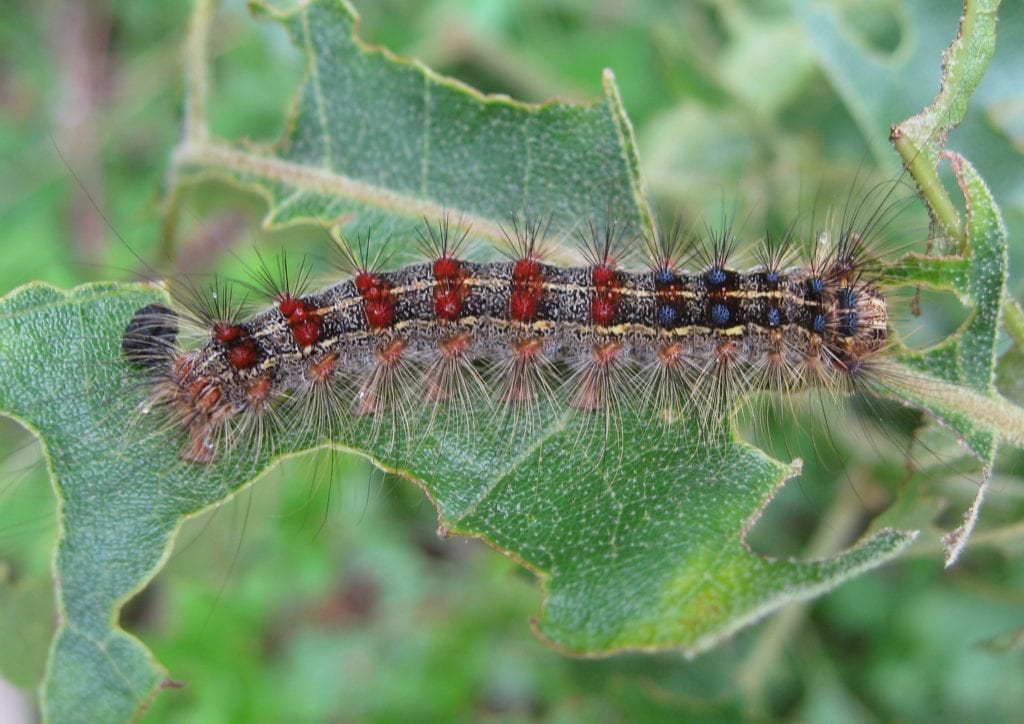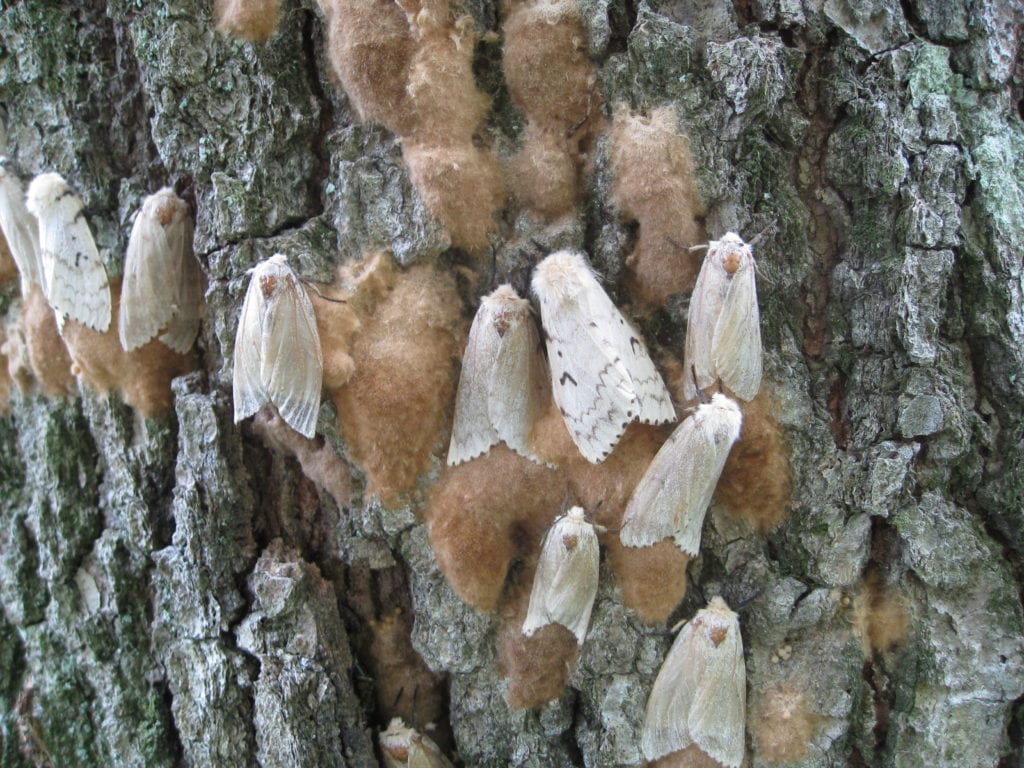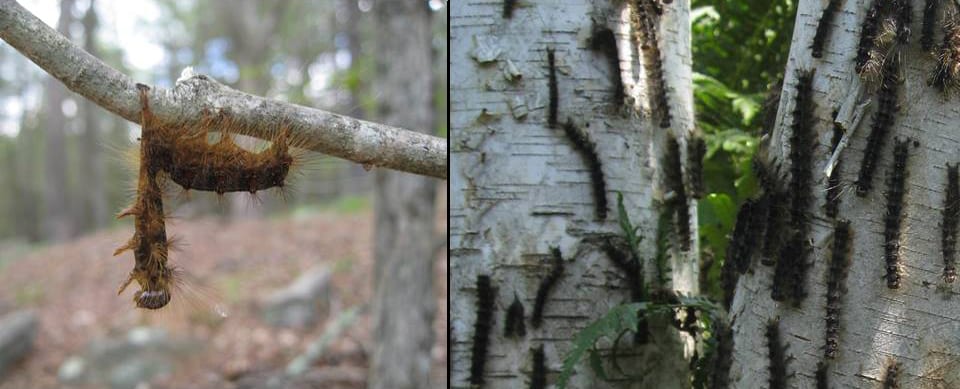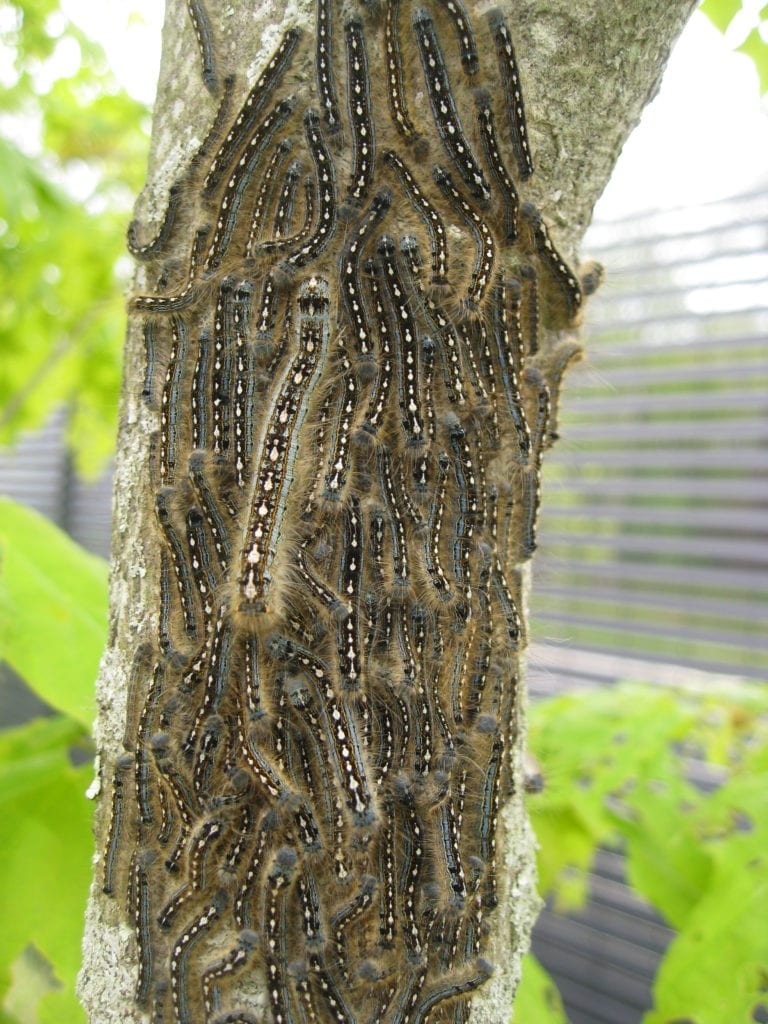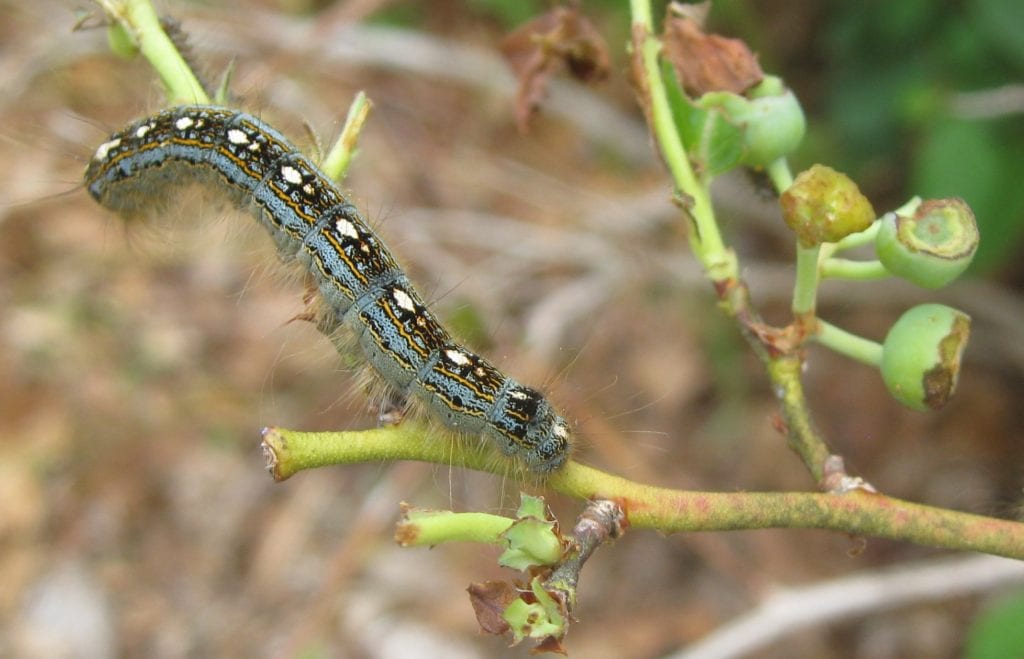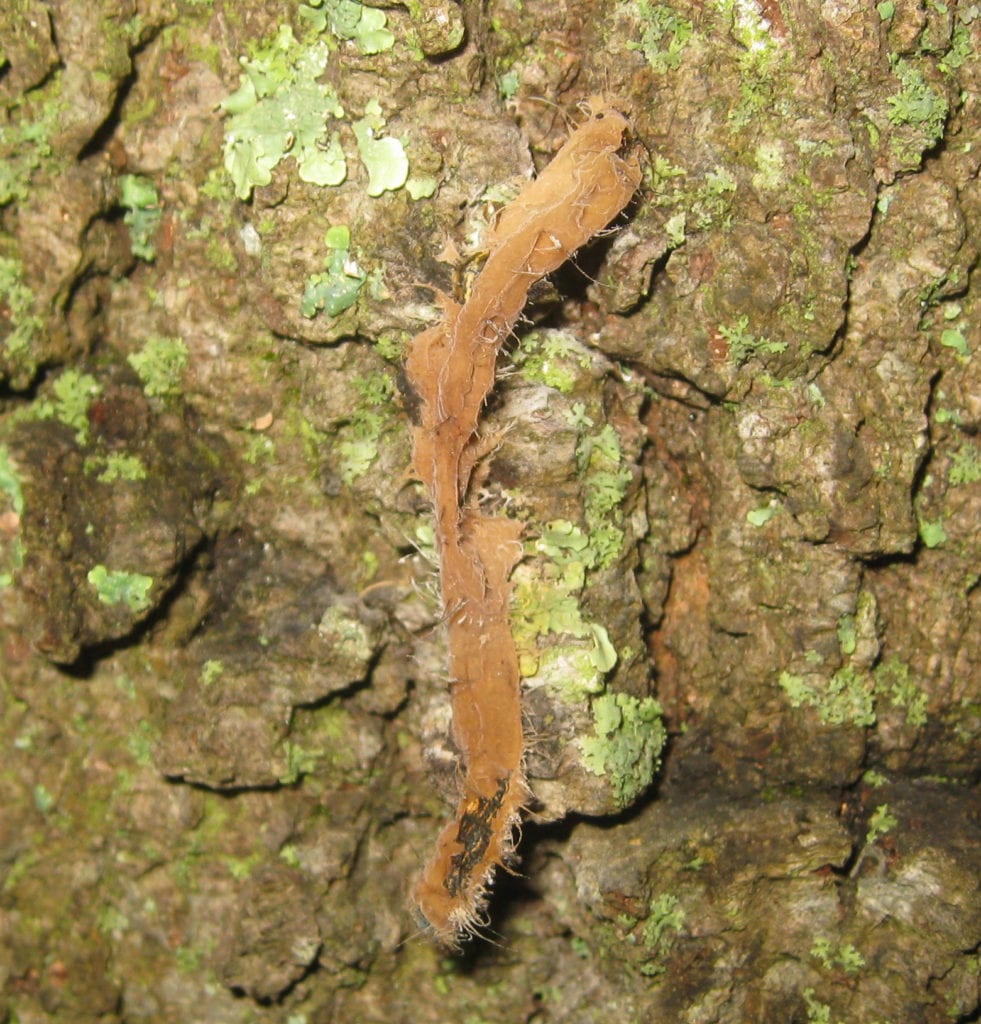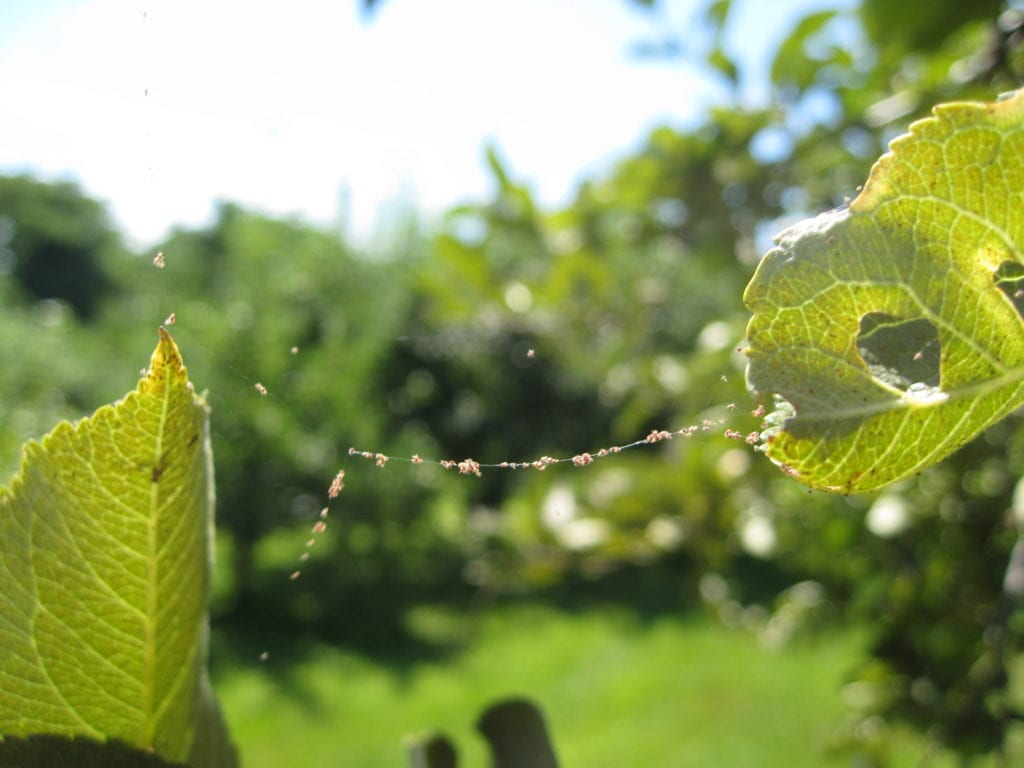by Heather Faubert
Two general statements about droughts, insects, and diseases hold true:
- Most plant-feeding insects tend to survive very well under drought conditions.
- Plant diseases are not very troublesome during droughts.
All insects can acquire various fungal disease and these diseases generally need high humidity. Similarly, most plant diseases need rain or at least high humidity to infect plants. At the University of Rhode Island (URI) Plant Protection Clinic, many fewer plant disease samples were submitted in 2016, during the third year of drought conditions, than we’ve seen in 2017. However, during that same three year period we saw an increase in outbreaks of some insect problems.
Gypsy Moth
Luckily we are not experiencing drought conditions in 2017. Droughts are tough on trees and landscapes, and irrigation can never entirely simulate a good rainfall. The 2016 drought followed two years of below average rainfall. Dry Spring conditions for three consecutive years led to outbreak populations of gypsy moth caterpillars in southern New England.
I’m rejoicing that many gypsy moth caterpillars died this summer because a wet spring allowed the fungal disease, Entomophaga maimaiga, to do its job. When Entomophaga spores land on damp caterpillars, the spores germinate and penetrate through caterpillar cuticles. The fungus kills a caterpillar in about one week and then shoots out more spores to infect more gypsy moth caterpillars.
In areas with large gypsy moth populations in 2016 (such as all of Rhode Island), the gypsy moth caterpillar population has crashed, and we do not expect a large population in 2018. Locations that saw high gypsy moth populations in 2017, but not in 2016, do not look so lucky. Gypsy moth caterpillars did die of Entomophaga in all locations, but where there was not a large gypsy moth population in 2016, there was not a large supply of Entomophaga ready to start killing caterpillars in May. Gypsy moth egg masses will be visible in mid to late July and will indicate where to expect high gypsy moth populations in 2018.
Forest Tent Caterpillars
Forest tent caterpillars, a native insect and one that does not build obvious tents, also defoliated many acres in Rhode Island and Connecticut and perhaps elsewhere in 2016 and 2017. Forest tent caterpillars are closely related to eastern tent caterpillars, whose tents we see each year in black cherry and often in apples and crabapples. Forest tent caterpillars prefer to feed on oaks; however, the larger caterpillars can feed on many tree species. They don’t actually build tents, but they do construct silken mats where they congregate en masse. Drought conditions in 2014-2016 probably contributed to high numbers of forest tent caterpillars too.
Forest tent caterpillars are also susceptible to fungal diseases: a different species of Entomophaga, and Furia gastropachae. Furia gastropachae was found in several locations of Rhode Island in late spring 2017, but is not expected to crash the forest tent caterpillar population. (Forest tent caterpillar populations tend to crash from a native fly parasitoid.)
Lecanium Scale
2011 was another dry year in southern New England, and in 2011-2012, lecanium scale populations increased to amazing numbers. Many surfaces were noticeably covered with black sooty mold that grew on the soft scales’ excreted “honeydew.” In 2012, the lecanium scale population crashed with the help of a fungus and damp, summer weather.
Spider Mite
Spider mites are notorious for building up during periods of hot, dry weather. I haven’t seen high numbers of spider mites yet this year, but it has been wet, and the summer is still young. Spider mites often cause leaves or needles to become orangey or bronzed. If you see discolored leaves or needles, check for spider mites, especially on the underside of foliage. Many predatory mites and insects feed on pest mites, so if you encounter spider mites in the landscape check for natural enemies too. For more information on spider mites see this factsheet: https://extension.umd.edu/hgic/spider-mites-trees-and-shrubs.
Aphids
Some insects that thrive on lush new growth, such as many aphids, may not produce as many offspring during drought conditions. Ample rainfall usually means ample new plant growth and more aphids attacking plants. So during drought conditions you will probably see fewer aphids.
So how to prepare for the next drought? Mulching plants certainly helps conserve water and makes plants less susceptible to droughts. Another option is choosing plants that are more resistant to drought conditions. Are you familiar with the RI Native Plant Guide? This website helps you select native plants for all types of conditions. Search over 350 plant species and choose plants based on desired attributes such as drought resistance. See www.web.uri.edu/RInativeplants/
About the Author
Heather Faubert runs the Plant Protection Clinic at the University of Rhode Island. Heather has worked in the Plant Sciences Department at URI for 36 years, mostly working with farmers to help solve pest problems. In 2005 she started working in the Plant Clinic and working closely with Rhode Island’s green industry and RINLA (RI Nursery and Landscape Association).
***
Each author appearing herein retains original copyright. Right to reproduce or disseminate all material herein, including to Columbia University Library’s CAUSEWAY Project, is otherwise reserved by ELA. Please contact ELA for permission to reprint.
Mention of products is not intended to constitute endorsement. Opinions expressed in this newsletter article do not necessarily represent those of ELA’s directors, staff, or members.


